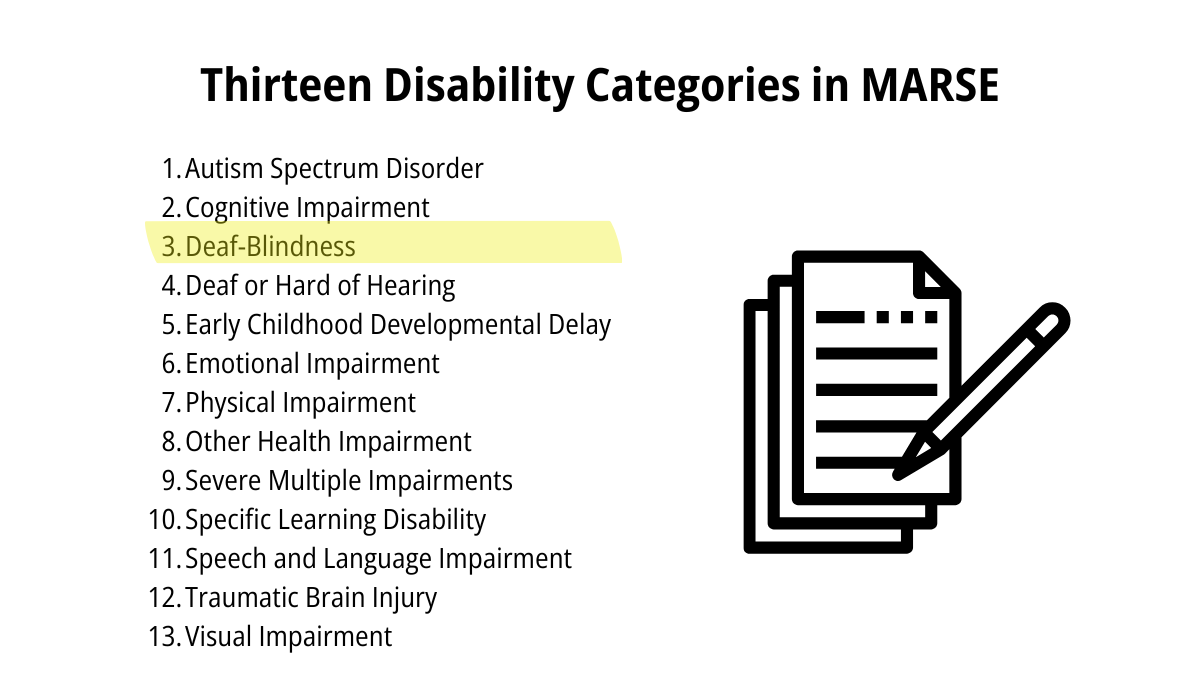Eligibility for Special Education under designation of Deaf-Blindness
The Michigan Administrative Rules for Special Education (MARSE) define eligibility for special education services within thirteen (13) categories of disability.
- MARSE R 340.1717 Deaf-Blindness


